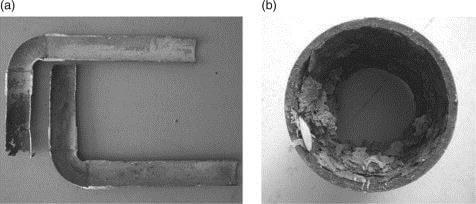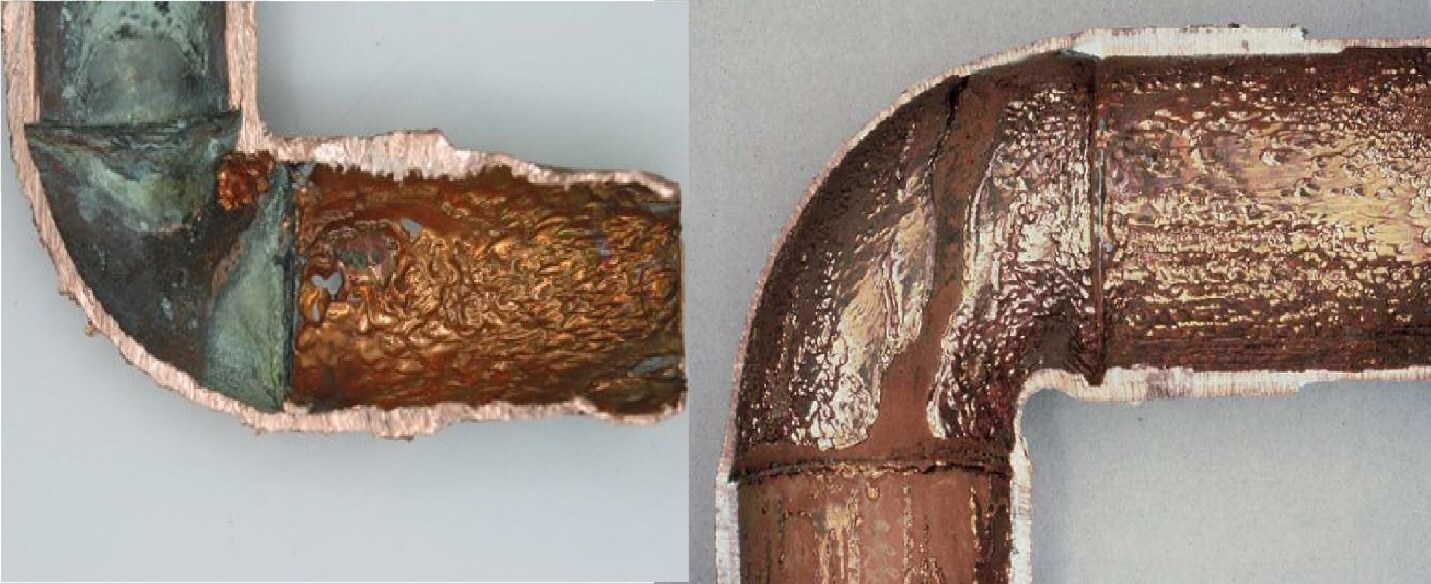
What is Abrasion Corrosion wear?
Abrasion Corrosion wear is a type of accelerated metal corrosion caused by the relative motion between corrosive environments and metal surfaces. Corrosive environment can be one of the following:
- Liquids, for example water or solutions containing suspensions;
- Organic materials, gases or vapors such as geothermal liquid.
In the process of Abrasion Corrosion wear, the metal surface is damaged by mechanical or hydraulic abrasion caused by ambient flow. In abrasion corrosion wear, the metal surface is not covered by corrosion products. But in appearance it is marked by grooves, waves, round holes or valleys, and usually shows a directional pattern.
Corrosion damage:
In many cases, the damage caused by Abrasion Corrosion wear occurs in a comparatively short time and is sometimes unexpected. Because previous corrosion tests have been performed under static conditions, or effects of abrasion have not been considered. Most metals and their alloys are prone to damage by abrasion.
How are metals prone to abrasion corrosion?
Metals that need to form a surface layer to be passivation are also prone to Abrasion Corrosion wear. Because if the surface layer is damaged, the metal or metal alloy is attacked at high speed. Increasing the speed usually leads to increased abrasion corrosion.
Abrasion Corrosion wear can occur in equipment used in a geothermal environment which is exposed to moving fluid, including piping systems, especially trap and field tee, pumps, valves, impellers, blowers, tubular heat exchanger, condensers, nozzles and turbine blades. Abrasion Corrosion wear can also be caused by impingement.
Abrasion Corrosion wear in turbines:
Abrasion Corrosion wear can occur at the vapor turbine blades in geothermal turbines, especially at the outlet end or wet steam of the turbine. In addition, another form of Abrasion Corrosion wear is cavitation destruction.
This is caused by the formation and collapse of vapor bubbles in the liquid near the metal surface. This type of degradation occurs in equipment in which liquid flow and pressure changes occur at high speeds.
These conditions can occur, for example, in wells and geothermal equipment. Cavitation can occur in geothermal wells when water begins to boil as pressure decreases.
Because the formation of vapors (containing dissolved gases) and bursting on the metal surface at high speeds leads to cavitation damage and create cavities.
Read in the Journal of Corrosion: Corrosion of metals and its aggravating factors
Metals Corrosion; The rate of corrosion interaction depends on several kinetic and thermodynamic factors, such as temperature, pH, velocity of the fluid, and the concentration of the affected medium.

Abrasion Corrosion wear encompasses a wide range of flow-induced corrosion processes. Abrasion liquids can damage the corrosion protection layers and remove small pieces of it.
Abrasion Corrosion wear mechanisms:
For example, a carbon steel pipe that carries water is usually protected from corrosion by an oxide film. Rates are usually less than 1 mm per year (or 400 mpy).
Removal of the film by abrasion agents increases the corrosion rate by up to 10 mm per year (400 mpy). In addition, any abrasion of the underlying metal occurs.
Damage to the protective film is believed to be due to mechanical forces due to fluid or solid or increased dissolution due to flow.
This combined function of abrasion and corrosion is known as abrasion corrosion.
The mechanical forces by which wear occurs can be summarized as follows:
1) Turbulent flow, variable shear stress and pressure shocks
2) The effect of suspended liquid droplets on high-velocity gas flow
3) The effect of suspended gas bubbles in the liquid flow
4) severe collapse of vapor bubbles, cavities
5) The effect of suspended solid particles
The five sources of mechanical power that mentioned above can found in abundance in the oil and gas industry. However, most of the abrasion corrosions detected in the oil and gas industry are due to impact of suspended solids on pipes, check valves and multi way.
To understand the mechanisms and parameters involved in abrasion corrosion, it is important to distinguish between abrasion, corrosion, abrasion corrosion.
Abrasion corrosion is caused by the interaction between electrochemical (corrosion) and mechanical processes (abrasion).
Many studies emphasize that the complexity of studying the phenomenon of Abrasion Corrosion is due to the synergy between abrasion and corrosion. This synergistic effect results in a greater loss of metal than the combined effects of wear and corrosion, which act separately.
Sediment/ Scale formation mechanism
In CO2 corrosion, the iron carbonate scale (FeCO3) can deposit on the steel surface, resulting in corrosion under certain environmental conditions of temperature, pH, velocity flow and concentration of species, such as iron (Fe2+) and CO3 carbonate.
Iron carbonate scale is a protective corrosion product and can reduce corrosion to some extent if it completely covers the steel surface.
Read in the Journal of Corrosion: Iron Corrosion and Prevention Methods
Iron corrosion usually occurs with the formation of iron rust (rust) and by an electrochemical reaction in the presence of oxygen and a solution of an electrolytic salt. When iron reacts with water and oxygen, iron (II) hydroxide (Fe (OH) 2) is formed.

However the presence of sand particles in the fluid medium can remove the protective scale through the sand and allow the corrosion rate to return to high levels of corrosion of the uncoated metal.
In the case of scale formation, there is a tendency to form sediment and also remove it by Abrasion by sand. Therefore, there is a strong synergistic effect between corrosion and Abrasion.
The figure above shows an overview of the mechanism of abrasion corrosion.
Under the conditions of scale formation, three broad regimes in solid particle abrasion are defined:
1) Dominance of the substrate
2) Modified scale
3) The predominance of scale
Which of these three regimes can control the abrasion corrosion wear process depends on particle dynamics (energy or angle effect), particle load and the rate of scale formation.
The predominant effect of the substrate is applied when the amount of metal losses is controlled by the wear of the substrate.
The predominant scale regime is formed when the impact of particles causes local fractures and leads to scale crushing. The separation mechanism of the scale can be done by brittle and ductile wear.
It depends on the type of particles and the scale formed.

Read Corrosion Magazine: What is Corrosion?
Corrosion is a natural phenomenon that occurs when materials reach their lowest free energy level. This phenomenon causes the material to be destroyed by reacting with the environment in contact with it.
Source:
https://www.sciencedirect.com/topics/engineering/erosion-corrosion


